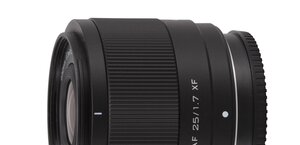Nikon Nikkor AF-S 28 mm f/1.8G
5. Chromatic and spherical aberration
Chromatic aberration
Many fast, fixed-focus Nikkors have a lot of problems with the longitudinal chromatic aberration. Unfortunately it is also true for the Nikkor 1.8/28 and to a significant degree. You can notice that much consulting our crops taken from autofocus testing chart images. The distinct coloration of the off-focus images is visible not only at the maximum relative aperture but also after stopping down by one full stop.
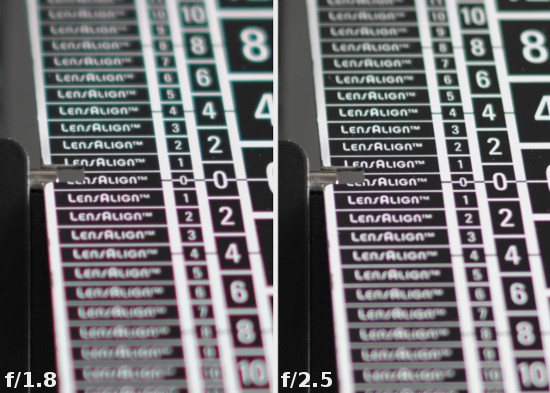 |
Please Support UsIf you enjoy our reviews and articles, and you want us to continue our work please, support our website by donating through PayPal. The funds are going to be used for paying our editorial team, renting servers, and equipping our testing studio; only that way we will be able to continue providing you interesting content for free. |
- - - - - - - - - - - - - - - - - - - - - - - - - - - - - - - - - - - - - - - - - - - - - - - -
Luckily when it comes to the lateral chromatic aberration the performance is better. The lens reaches values of 0.05-0.06% and it is a level considered by us as low. In fact in this category the Nikkor fares the best of all its rivals – it simply outclasses the Canon 1.8/28 (its chromatic aberration could reach 0.2%) and it fares a bit better than the Sigma 1.8/28 and the Zeiss 2.0/28.
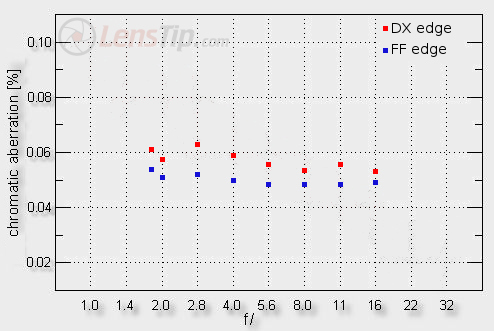
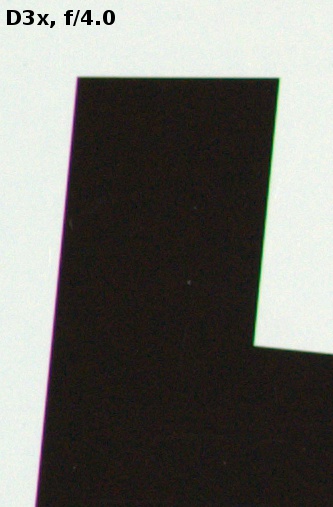 |
Spherical aberration
We knew there would be problems with the spherical aberration as soon as we took photos of the appropriate chart for our resolution test. While using f/1.8 and f/2.0 apertures the images taken in the autofocus mode were the best – small adjustments in the manual mode only made the results worse. On more significant stopping down the situation was the other way round: the photos taken in the autofocus mode were much worse than those taken in the manual mode and the adjustment had to be more and more significant with every increase of the aperture value.
It is quite easy to show the described phenomenon: it is a well-known focus shift. A significant depth of field, provided by such a wide-angle lens as the 1.8/28, tested here, can conceal that effect to some extend but still it remains noticeable. It’s enough to look at the crops below.
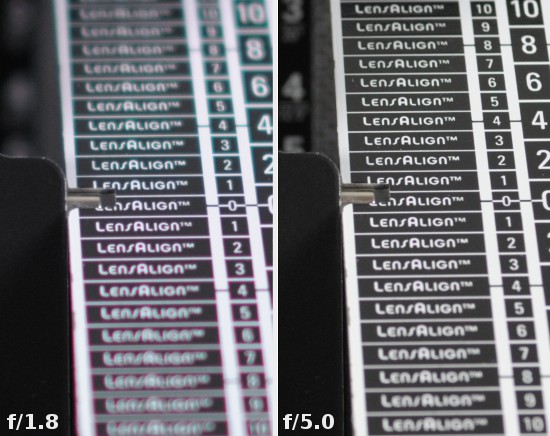 |
By f/1.8 the depth of field spreads more or less evenly on both sides of the middle of the scale. While applying f/5.0 that depth increases significantly and its spread changes very visibly. A much bigger part of the sharp picture is behind the object as it is before it.
The next proof of the weak spherical aberration provide defocused images of a diode in front of and behind the focus which we present below.
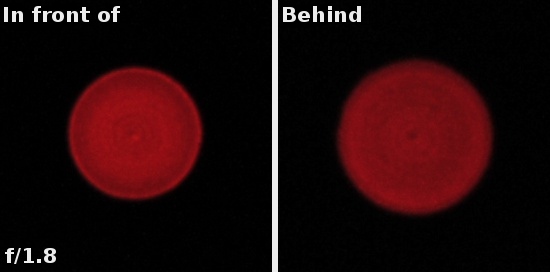
If the spherical aberration was corrected well the registered circles should have been very similar, showing an even spread of light on the whole surface. It is not the case. Momentarily the images are right their own opposites – as in one of them you can see a local maximum of the light intensity, in the other we get a distinct minimum in the same area. It proves that the spherical aberration correction is weak.






